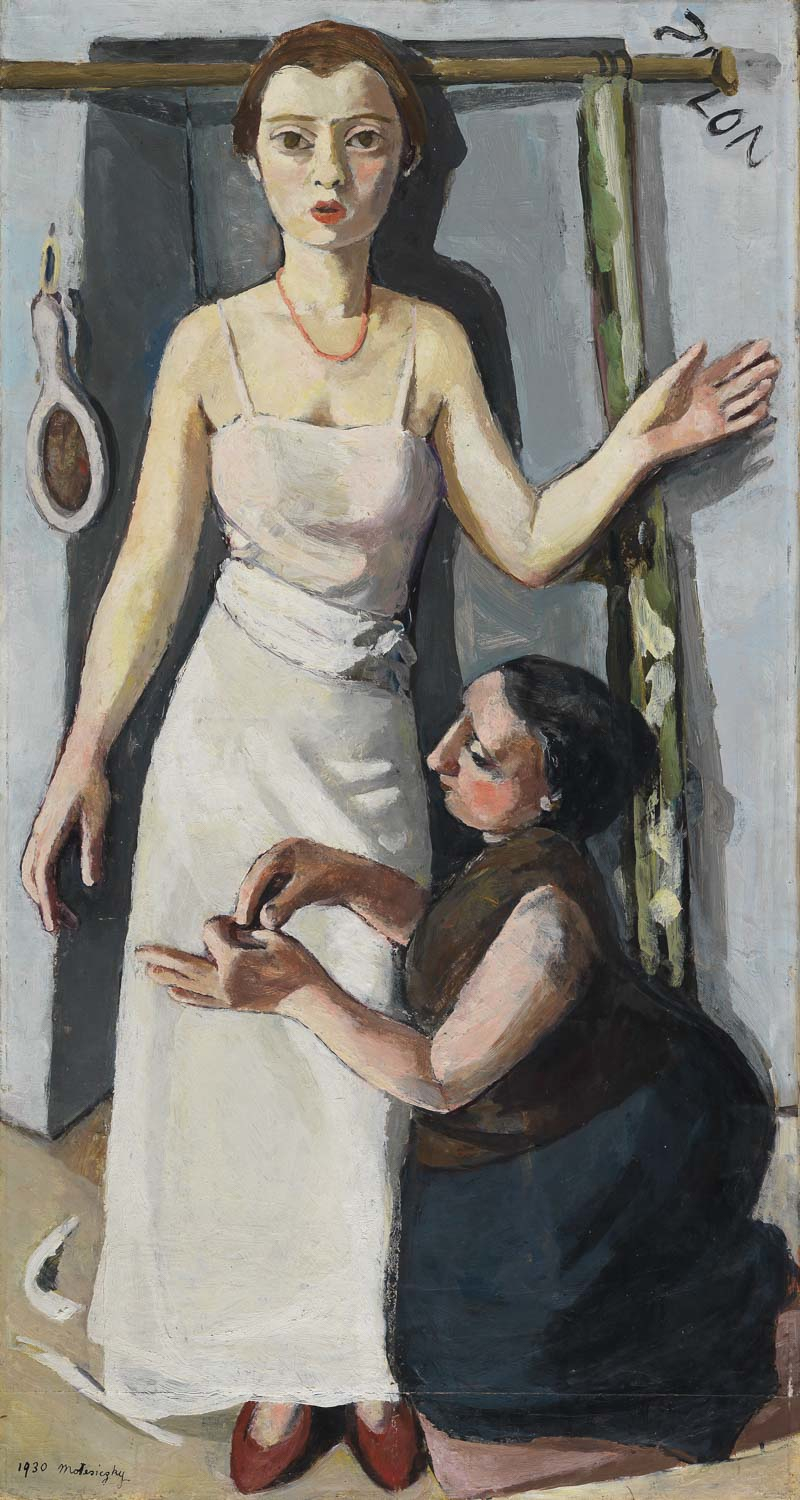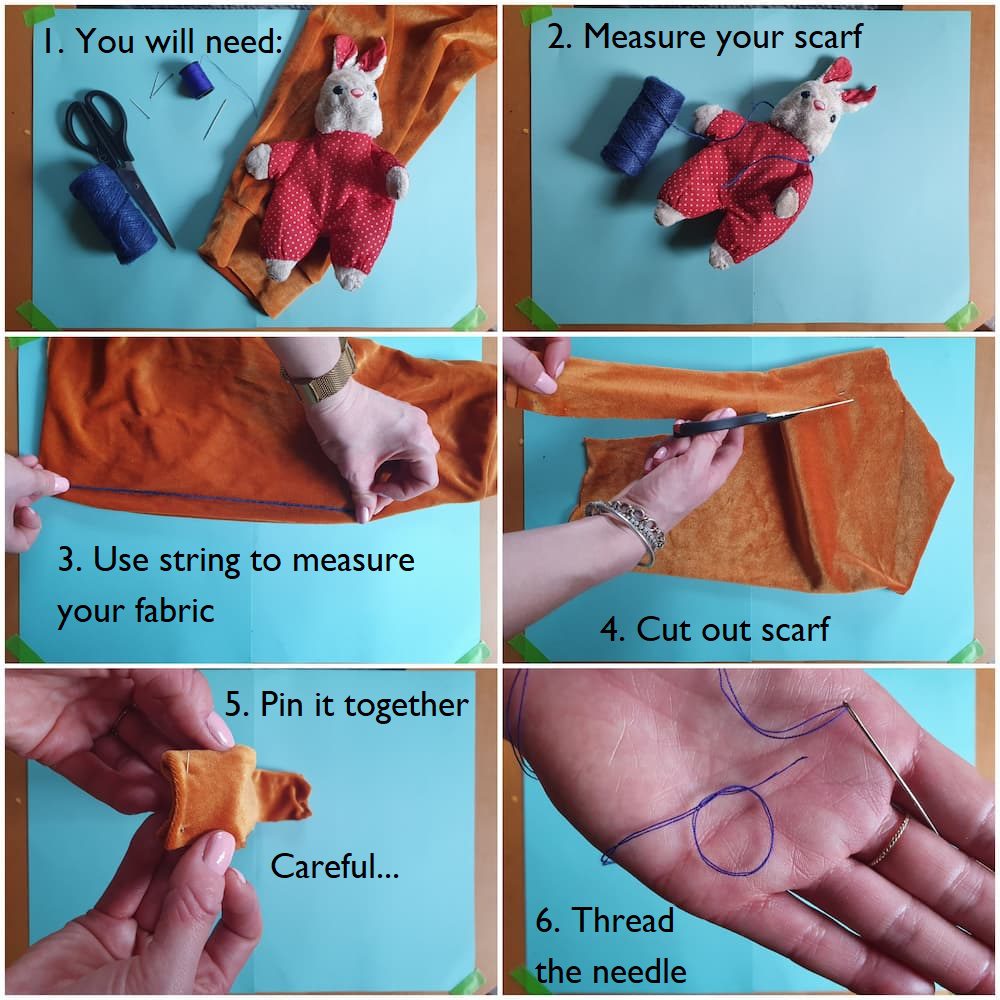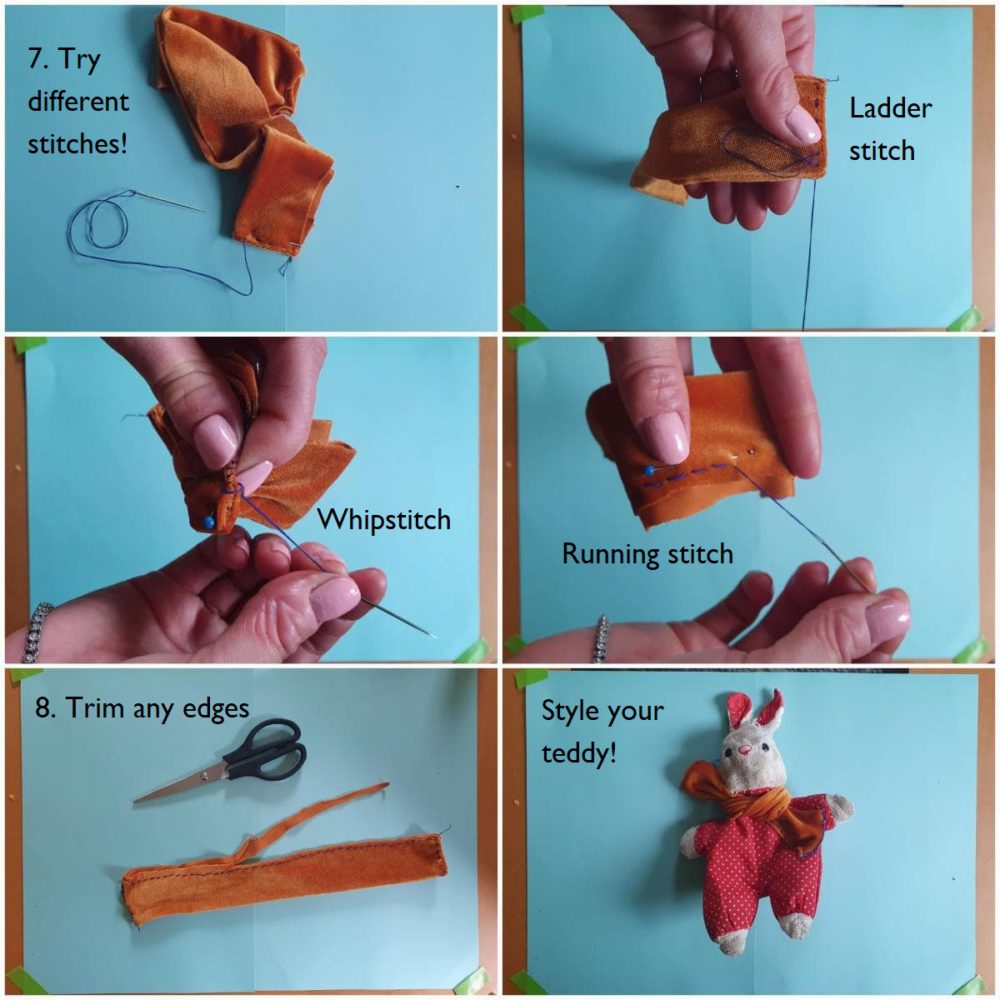Look and Think activities should take 5 -10 minutes.
Do activities might take longer depending on the task and how creative you are feeling!
At the Dressmaker’s, Marie Louise von Motesïczky
Oil on Canvas, 113 cm x 60.1 cm, PD.55-1993
© 2021 Marie-Louise von Motesiczky Charitable Trust
Look
This painting shows two women in a dressmaker’s workshop.
Which one would you say is the main character? How has the artist shown us that?
Think
The women don’t seem to be talking to each other.
What might they be thinking about?
What do you think the occasion is?
Think about their poses.
Do you think they would feel natural and comfortable or not?
Do
Dressmakers would be very skilled at measuring, cutting fabric and sewing.
Why not try some sewing yourself?
You could practise by sewing a button onto an old sock, or you could make something using old fabric – like the scarf we made for our teddy here.
Check with an adult before you start!

© 2021 Marie-Louise von Motesiczky Charitable Trust
You will need: a needle and thread, pins, scissors, your teddy and some old fabric.
- Measure the fabric and your teddy
- Cut out the fabric
- Pin it together. Be careful!
- Thread your needle. Ask for help if it is tricky.

5. Sew your fabric together. You could try different stitches, such as a ladder stitch, a whipstitch or a running stitch.
6. Trim off any excess fabric.
7. Style up your teddy!

The figure being fitted for a white dress is the artist, who was aged around twenty-four and living in Paris at the time. She stands slightly awkwardly with her arm raised so the dressmaker can work and our eyes are drawn to the woman’s careful hands. This was a familiar activity for the artist, who enjoyed buying clothes.
Our Head of Learning, Miranda Stearn, told us about her experience of teaching with this painting:
“When we show young people particularly, but older ones too, people assume it is a wedding dress fitting – partly I imagine because she is in white, but also because in the present day that is almost the only kind of dress people get fitted for. But in the 1930s this would have been a more normal experience for women of a certain background.
For me, this is a painting about work – specifically of being a woman. There is the dressmaker, who is clearly working. But being fitted for the dress, and that slightly awkward body language, is also work: the work of maintaining a polished, elegant appearance. Try contrasting this to earlier society portraits of women by men, which feel all about the effortless grace and elegance: this painting shows us the reality of the effort that goes into creating the perfect image captured by those earlier portraits – women’s lived experience.”
Download this Look Think Do as a PDF or a Word document.